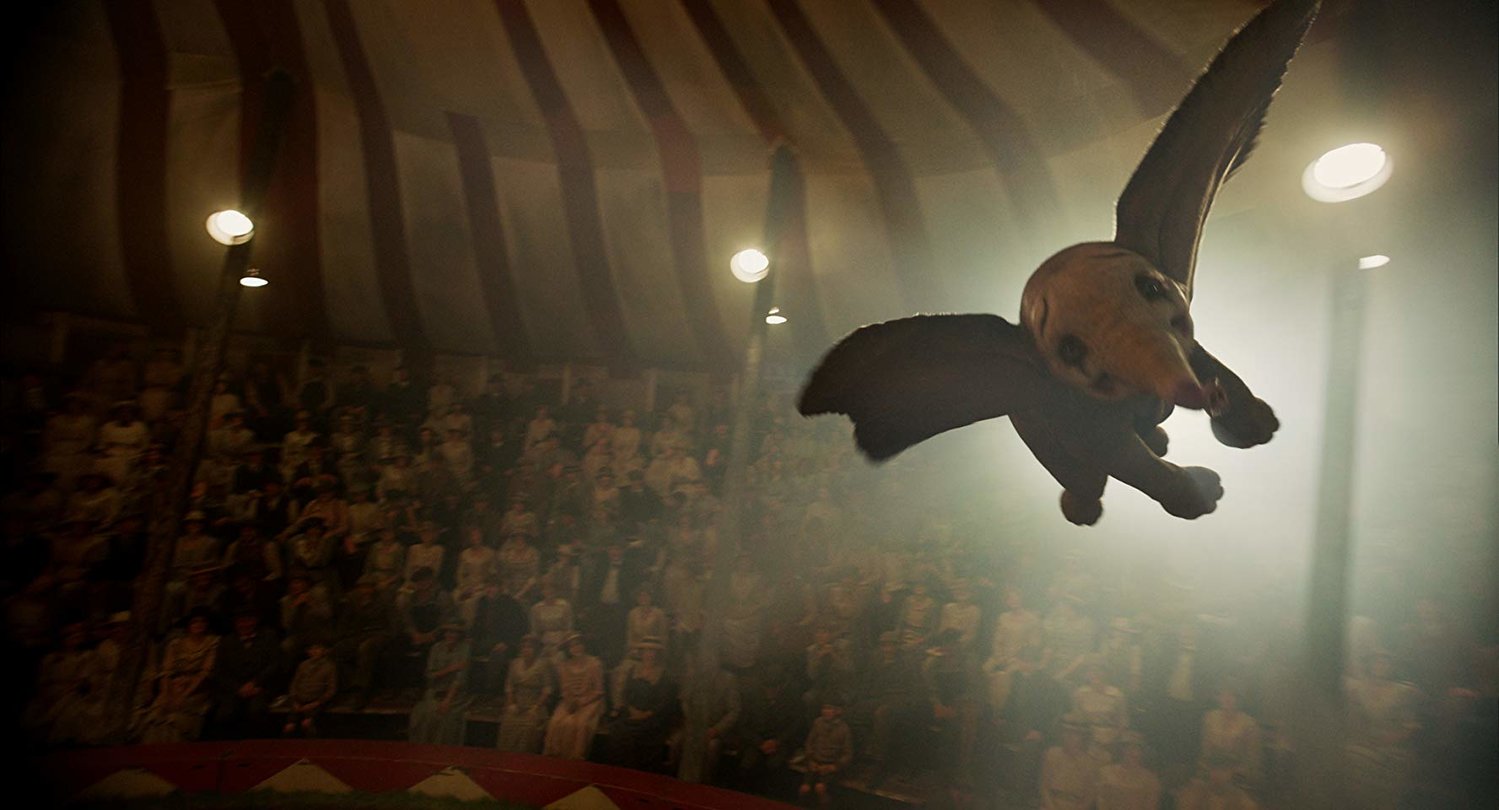
“What a disaster!” exclaims Alan Arkin near the end of Tim Burton’s “Dumbo.” As a critic, it’s tempting to cherry-pick this quote as applicable to both the burning big top Arkin’s character is witnessing and Burton’s live action adaptation of the 1941 Disney animated classic. But “Dumbo” isn’t tragic. It’s just inconsequential, an overlong, misshapen folly whose handsome exterior masks a lack of substance underneath.
Burton has made a career championing the plight of the misfit: “Edward Scissorhands,” “Ed Wood,” “Pee-wee’s Big Adventure,” “Batman,” “Charlie and the Chocolate Factory,” and more. So it’s little surprise that he embraced the story of the baby circus elephant with oversized ears, shunned by people and his fellow pachyderms alike. Burton’s first major alteration is the absence of Dumbo’s pal Timothy Q. Mouse, replaced here by two children, Milly and Joe Farrier (Nico Parker and Finley Hobbins), whose dad Holt (Colin Farrell) returns from the Great War having lost his wife and his right arm. The Farriers are carnys in the employment of Max Medici (Danny DeVito), the owner and ringmaster of a traveling fleabag circus. Holt is a former trick rider, but without an arm and the horses Max sold to pay the bills, he’s consigned to tending the elephants.
Mrs. Jumbo, the show’s star attraction, gives birth to a baby with big, floppy ears who is soon given the derisive moniker Dumbo. Audiences laugh at Dumbo, and Max sells off Mrs. Jumbo and wants to get rid of junior, too. But Milly and Joe happen upon a secret: when triggered by sniffing a feather, Dumbo can use his ears to fly. When the world finds out, they beat a path to Max’s big top, including V. A. Vandevere (Michael Keaton), an enigmatic entrepreneur who proposes a partnership with Max to make Dumbo the star attraction at Dreamland, Vandevere’s sprawling, futuristic theme park fashioned like a steampunk Jurassic Park.
Once we absorb Burton’s tweaks and see Dumbo soar (something that first occurs far earlier in the story than the animated version), there’s little left besides a long slog towards an inevitable ending. Considering that Burton nearly doubles the running time of the 1941 original, it’s shocking how underwritten some of the characters are. Holt is presumably cast with one arm so he feels some kinship with the physically deformed Dumbo. But not only isn’t that story angle fleshed out, Burton gives Holt a makeshift prosthetic to wear for most of the film, presumably to cut down on the costs of digital effects needed to mask Ferrell’s actual arm.
Max’s motives remain a mystery—he continuously facilitates between overcallous and caring. Keaton, reuniting with his “Beetlejuice” and “Batman” director, never seems at ease as Vandevere, unsure whether to accentuate his comedic or villainous qualities. Eva Green plays a French trapeze artist named Colette, but her origins are as uncertain as her accent—Vandevere repeatedly reminds her to not forget where he found her, without Burton ever telling us where he found her.
Burton’s trademark visuals are the star of this show, a neo-gothic milieu that’s both absorbing and foreboding. Max’s circus (and circus folk) look authentic and lived-in. Dreamland is a luminous locale, a kind of primordial Disney World. The CGI never strays beyond the boundaries of childlike fancy. But this palette only succeeds if it services a story that explores the dark recesses of ostracism, as well as assailing the entertainment industrial complex. But Disney isn’t going to allow a critique of Disney, so we’re left with thin characters inhabiting a thin plot.
Although Dumbo flies, “Dumbo” never takes flight.